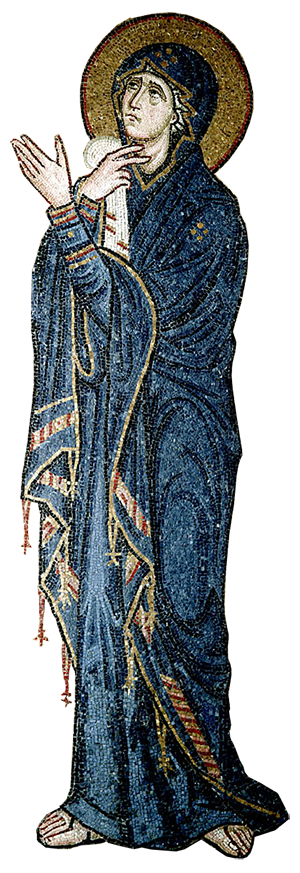

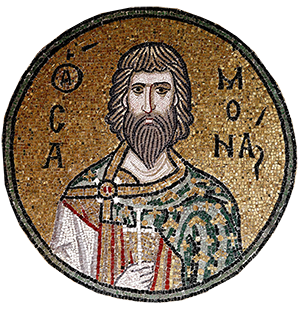

Christ Pantokrator of Daphni
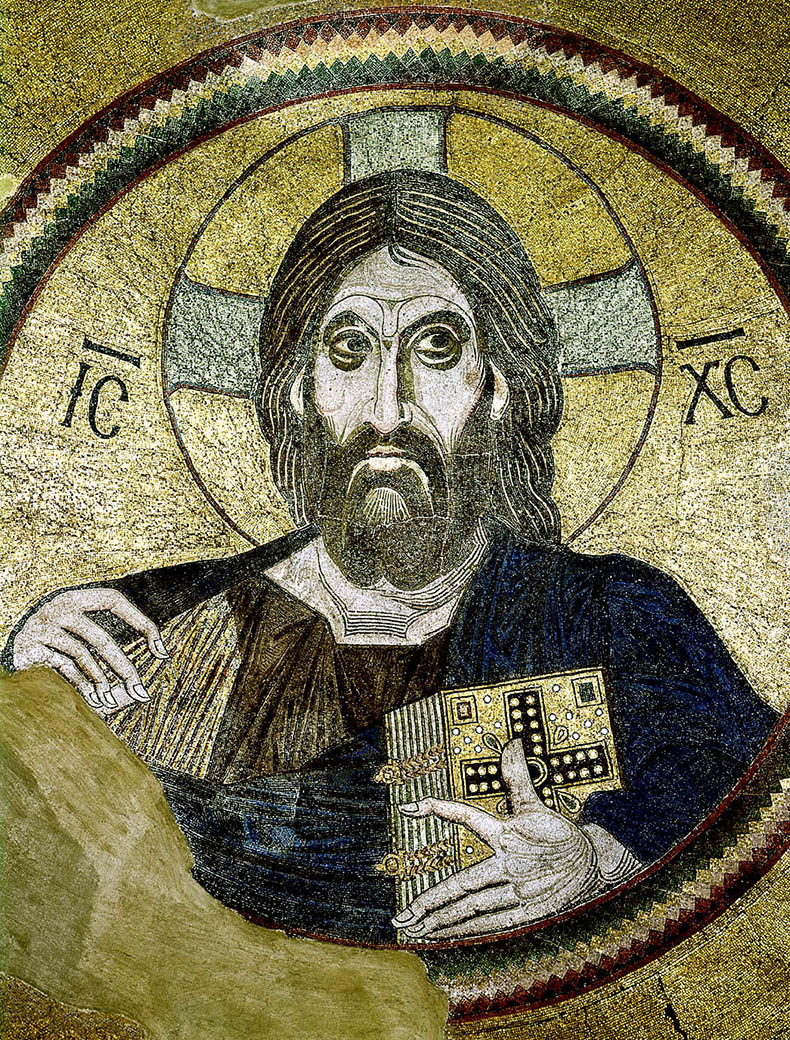
The mosaics of Daphni are thought to date from around 1100 during the Comnenian Dynasty. They are elegant, sophisticated and classical in style. The fingers and hands are amazingly delicate and fine - not so easy to do in mosaic cubes. The feet are also very beautiful. They used lots of white stone mosaic cubes which makes many of the figures look like classical statues. The artists used the same one-tone stone white as highlights. They paired it with three tones of brown, green or blue, for the clothes. Sometimes they added green cubes to blue-colored clothes. The blues are lapis and a tealy turquoise. The lapis cubes look like stone and the turquoise ones are glass. The gold background is composed of glass with fused gold backs. The artist has used pink to add live to the faces in a very subtle way. All the mosaic cubes look new to me, they don't have chipped corners that you would see if they were reused.
The drawing is excellent. The only discordant note is the fierce Christ Pantokrator in the dome. The eyes - which look away sternly - and the furrowed brow - are especially disturbing. The contrast with the beautiful figures in the rest of the church. In Robin's article he points out that some art critics claimed Christ's ugly look was the result of that 1890's restoration that was botched. Now Robin has proven that the entire figure of Christ in the dome is original. I think the artists who worked on it had a difficult time working with a figure on this scale with the materials at hand. The very fine - even delicate manner - they had laid the mosaic elsewhere is still to be seen in the way they laid Christ. They team must have come from Constantinople and have brought their supply of mosaic cubes with them. Raw glass was imported from Middle Eastern sources and then colorized, processed into sheets and cut into cubes in Constantinople. All the mosaic cubes in Daphni were newly produced at the time.
You can learn more about the mosaics of Daphni by visiting this page.
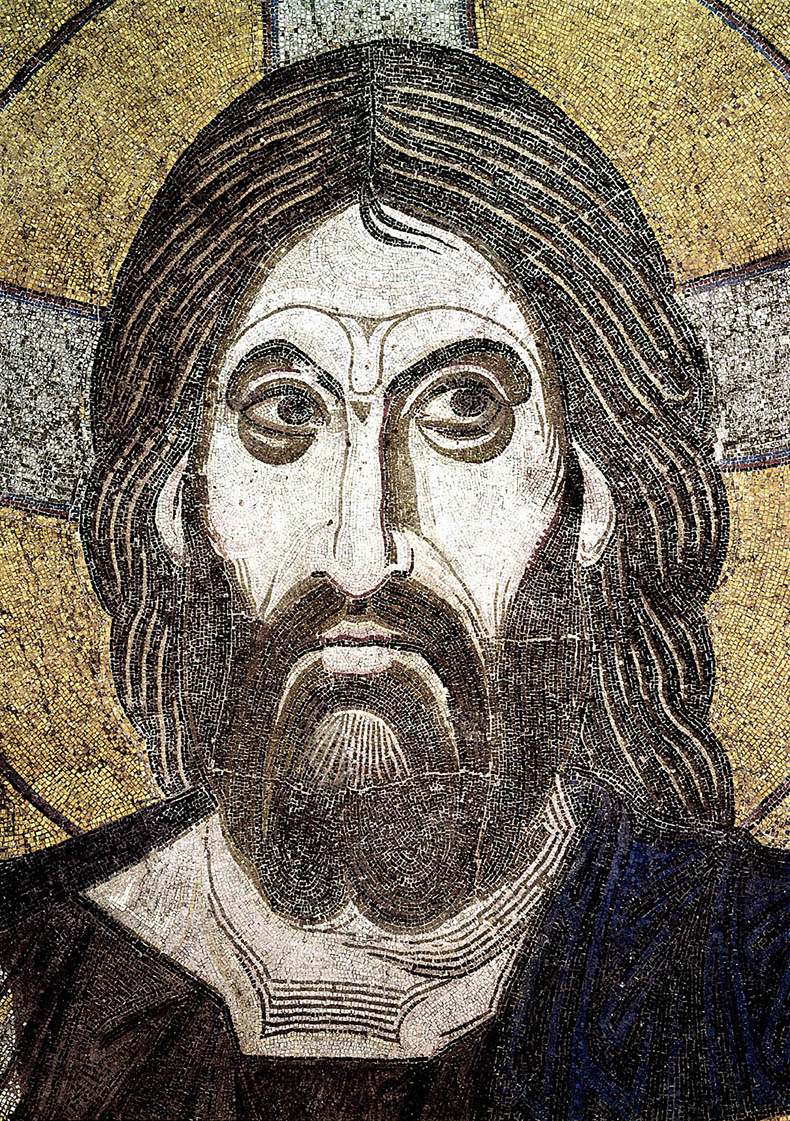
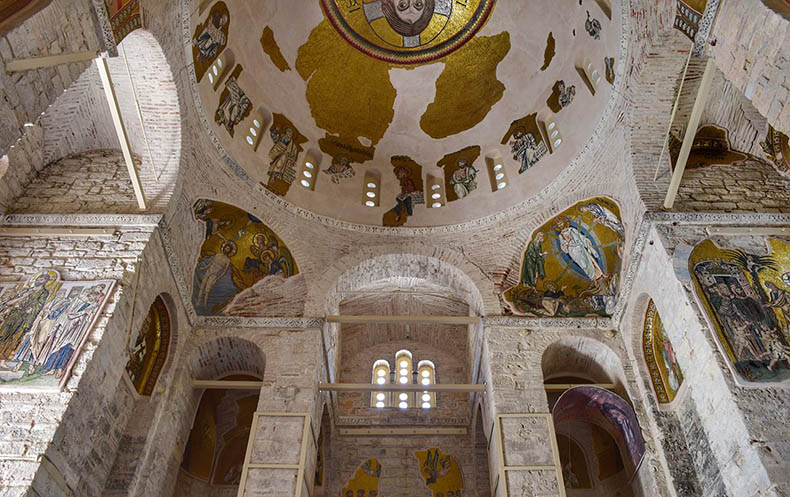




 click here for icons of christ
click here for icons of christ click here for icons of the theotokos
click here for icons of the theotokos click here for icons of angels
click here for icons of angels click here for icons of saints
click here for icons of saints








